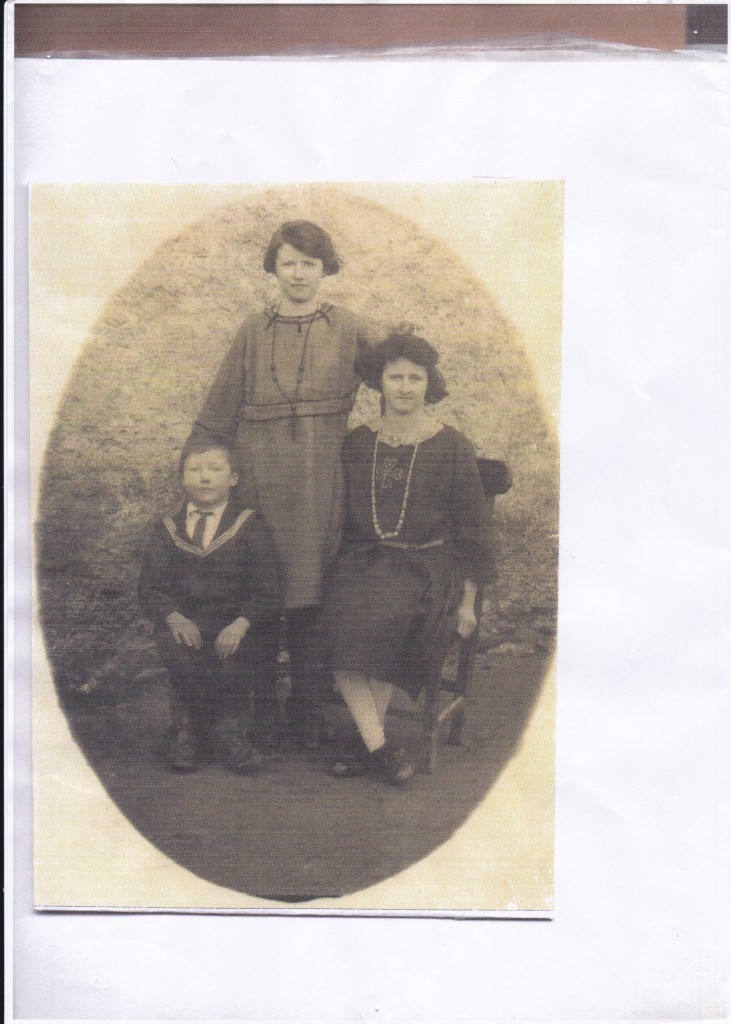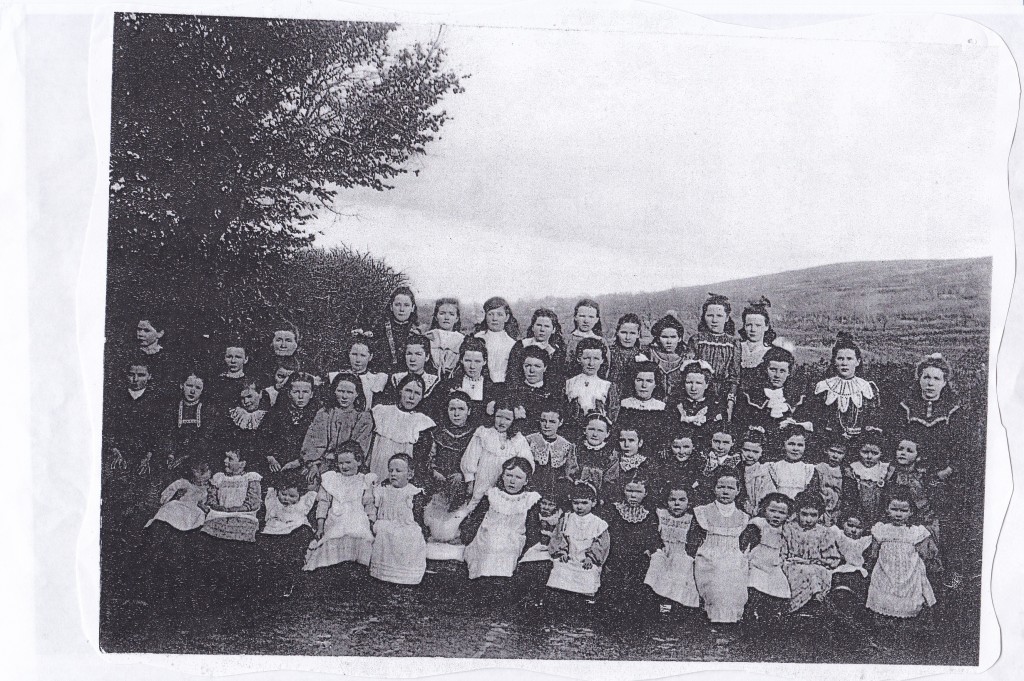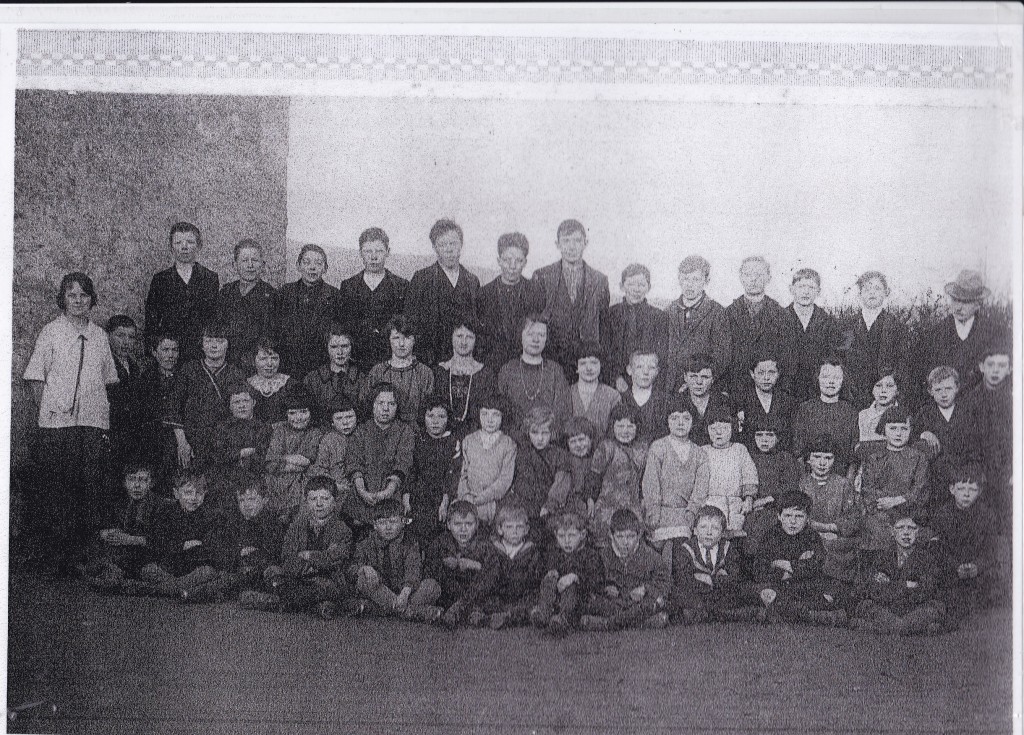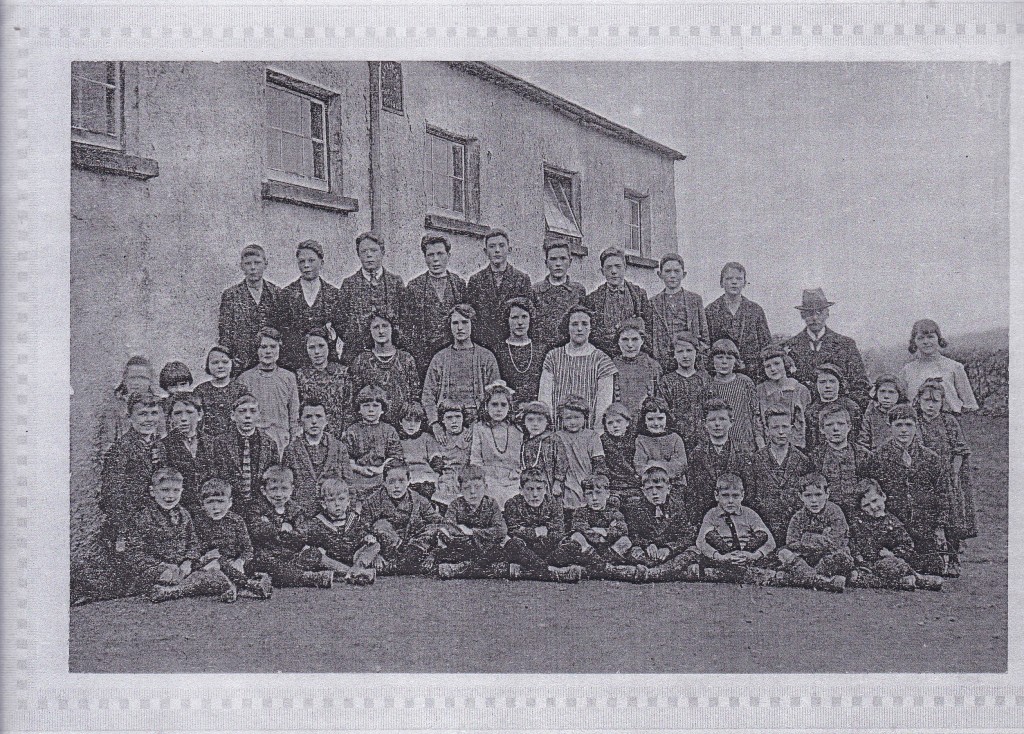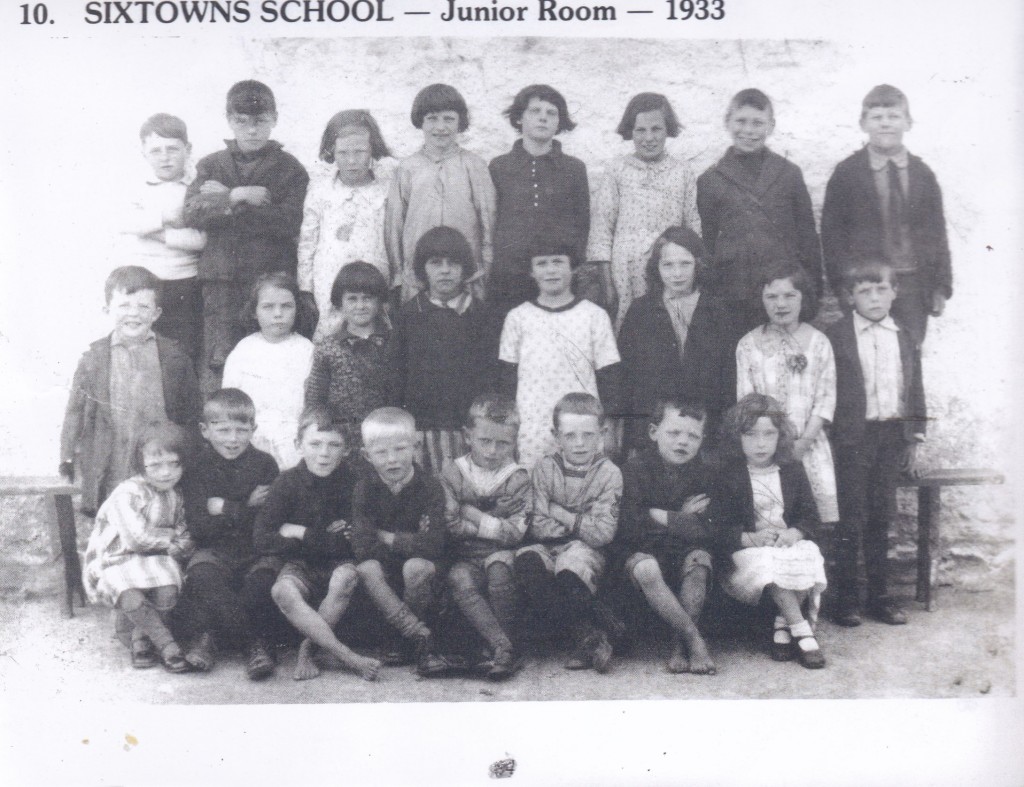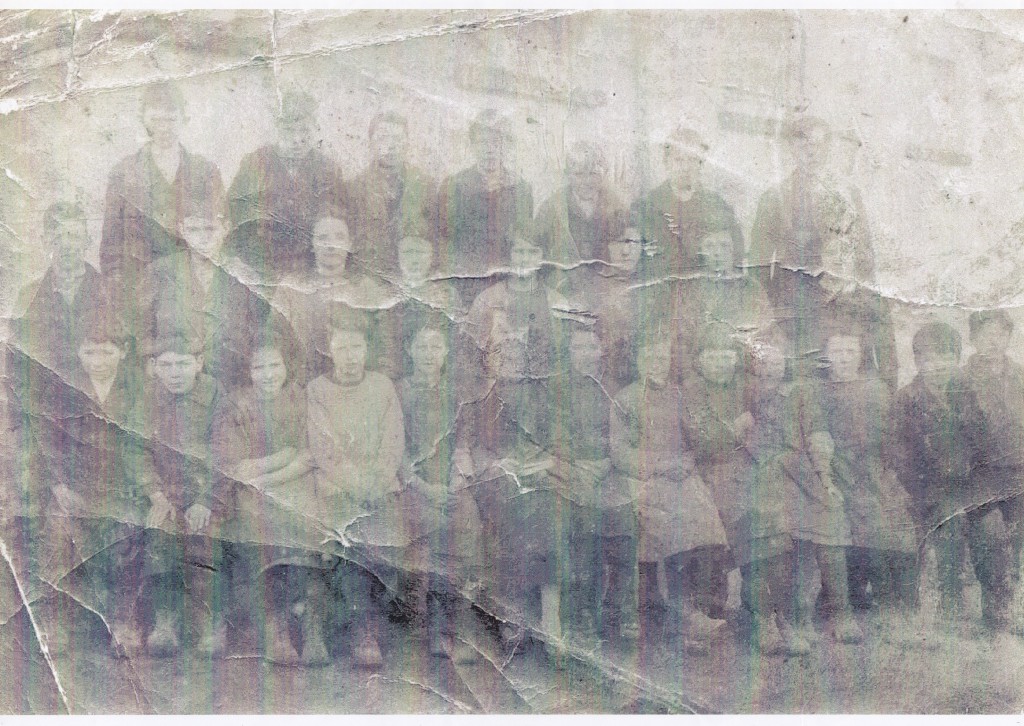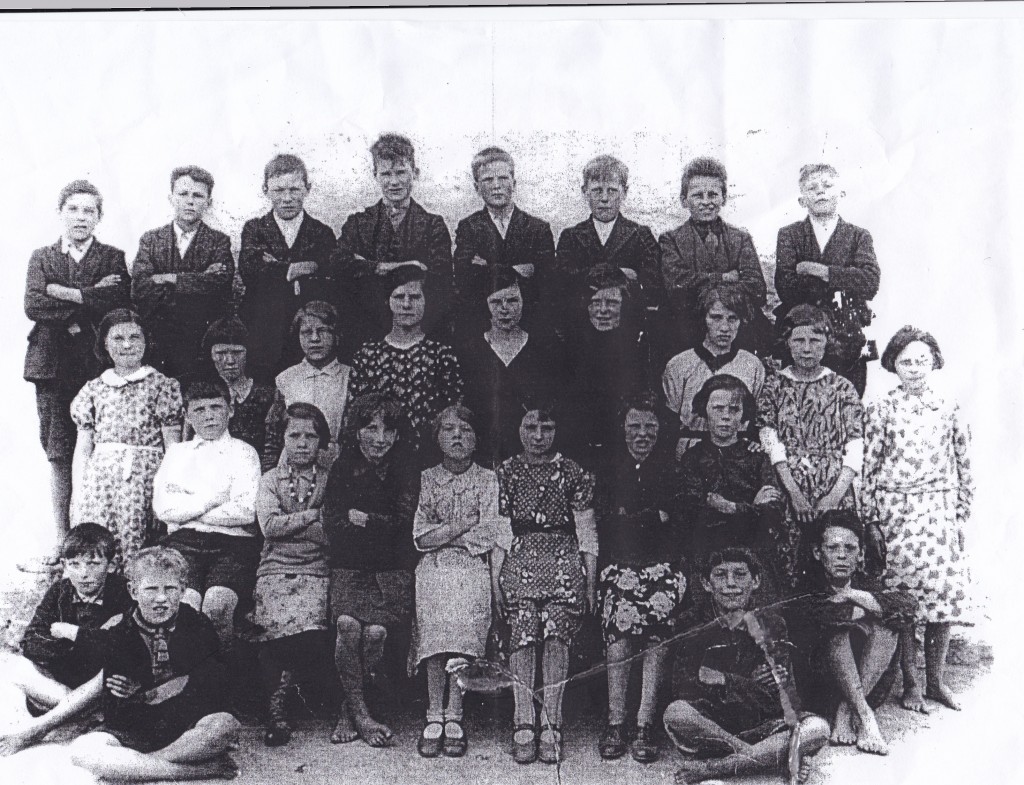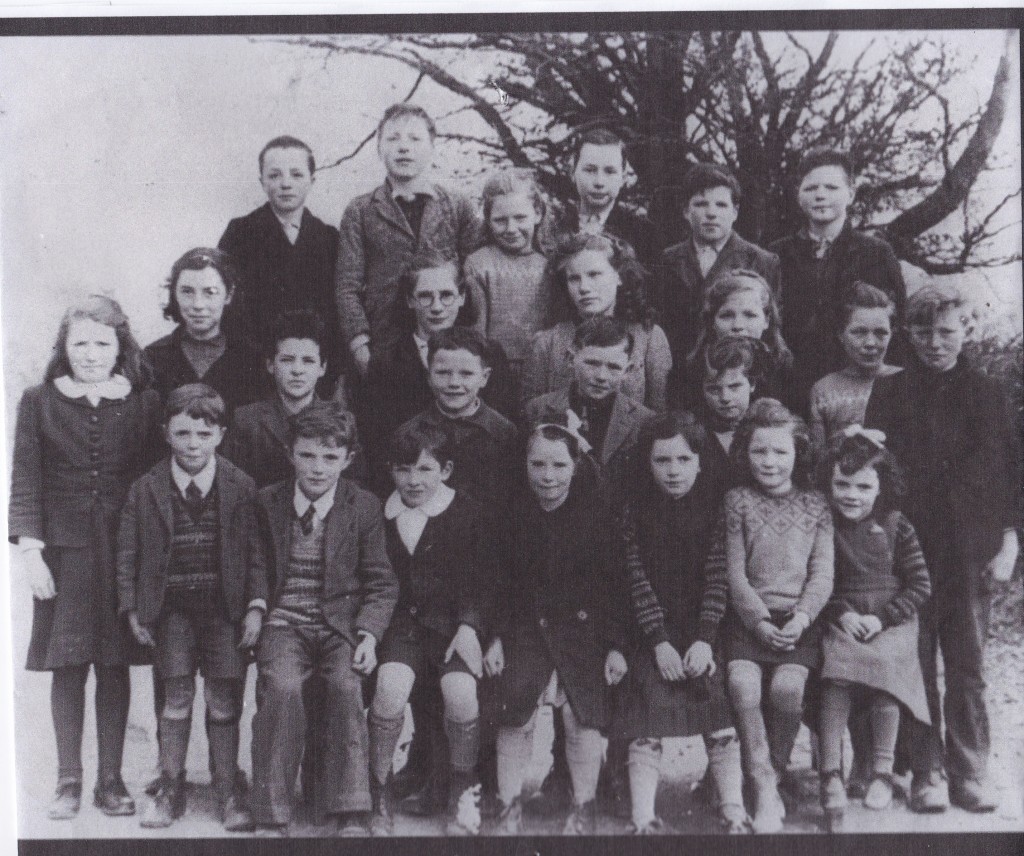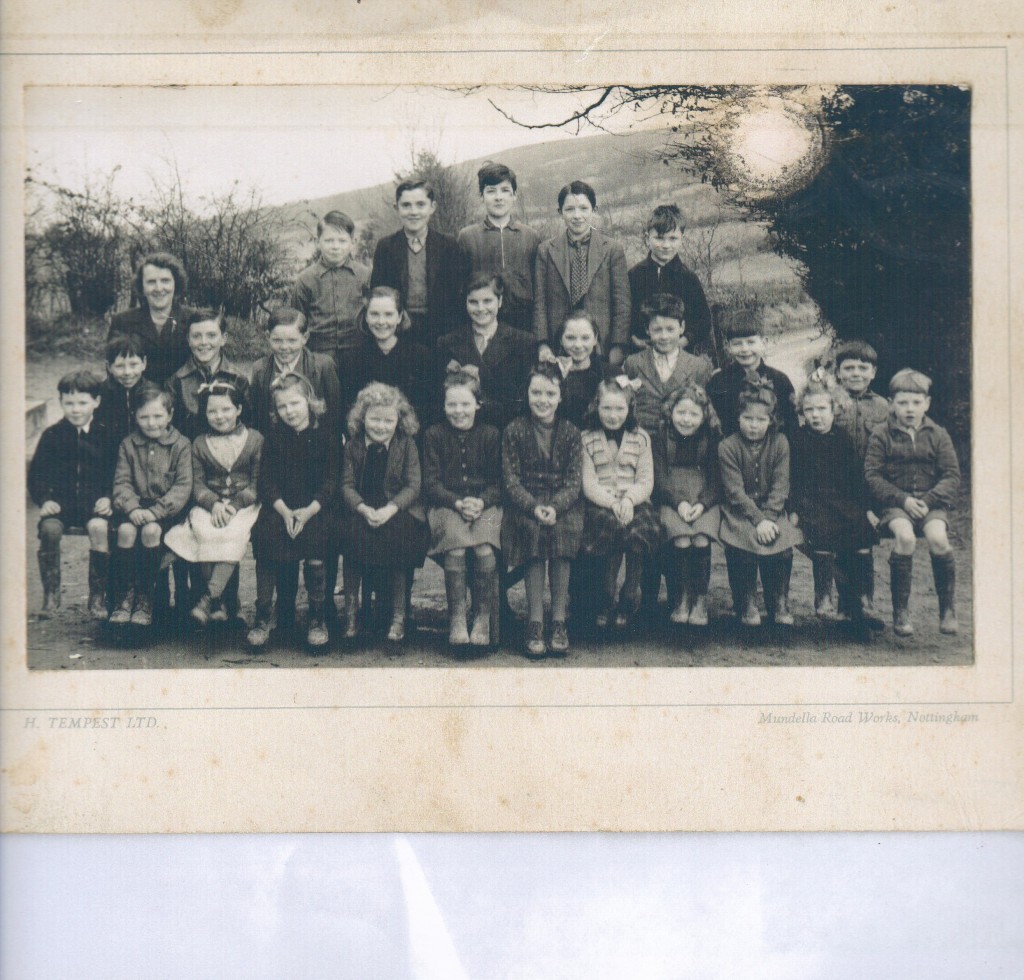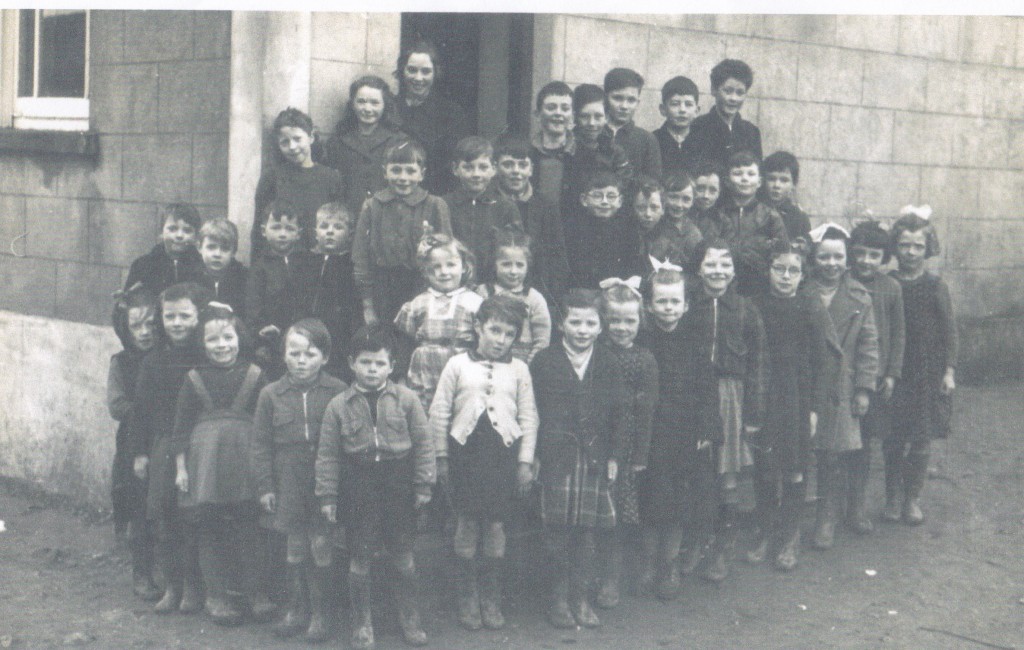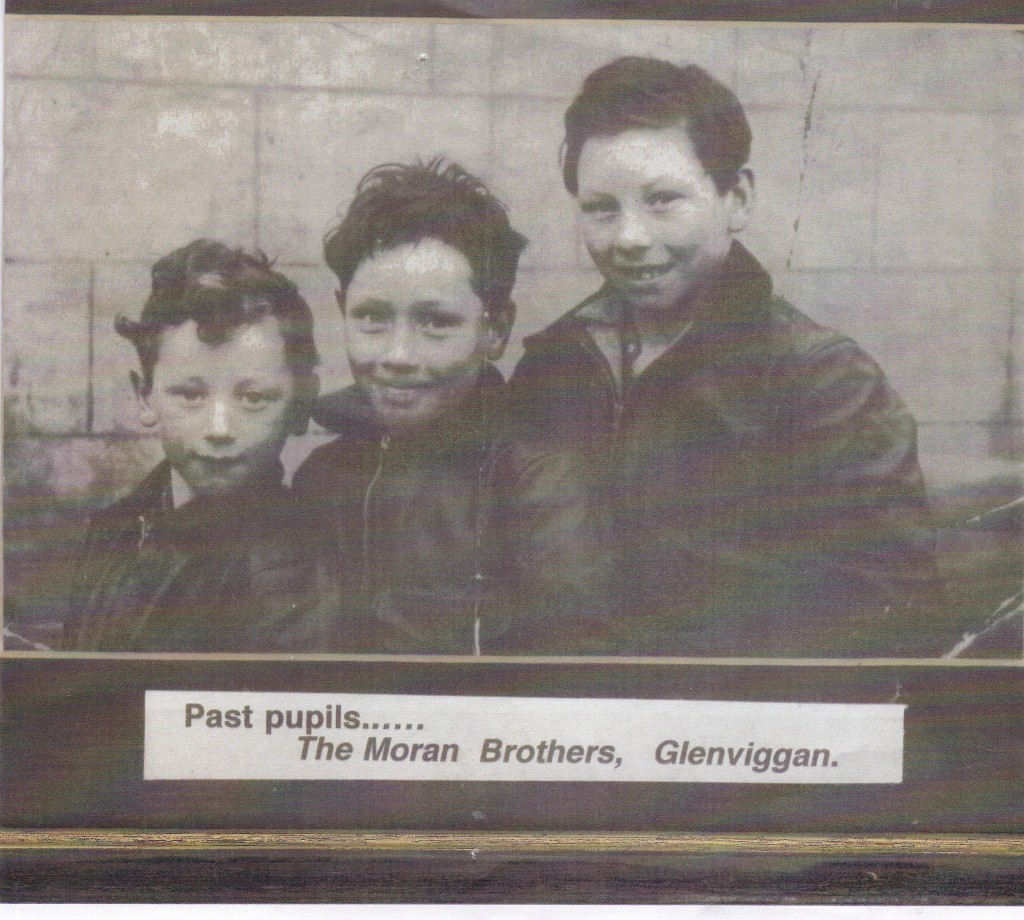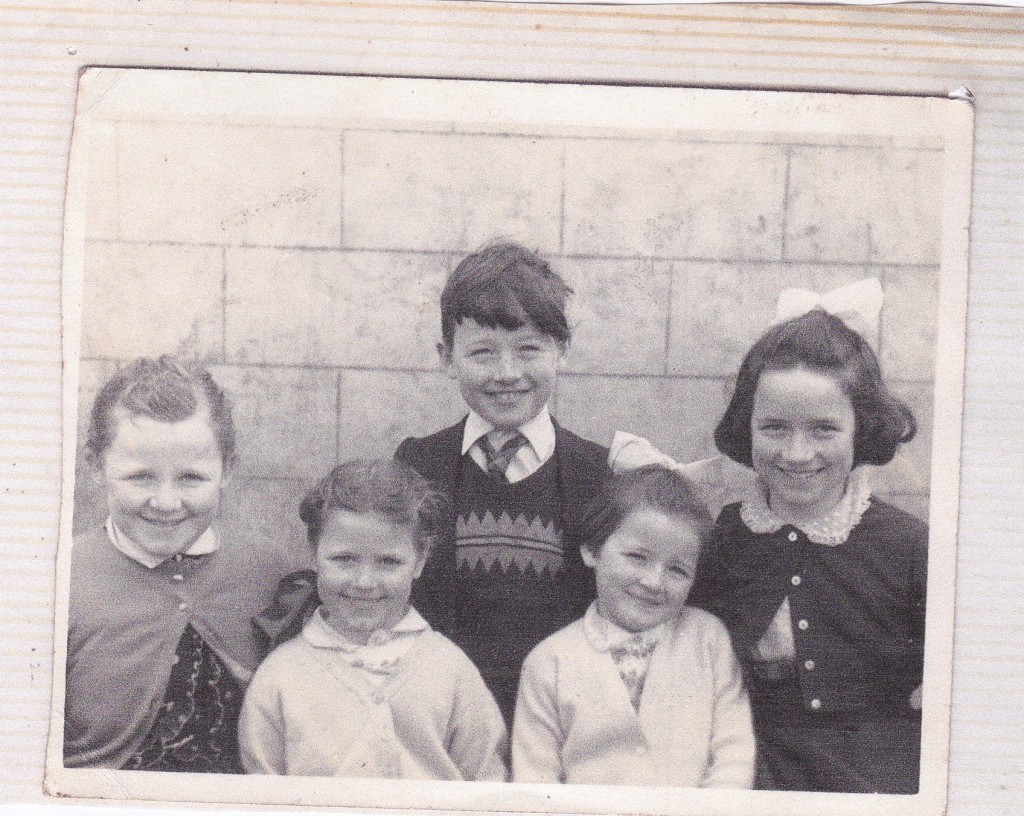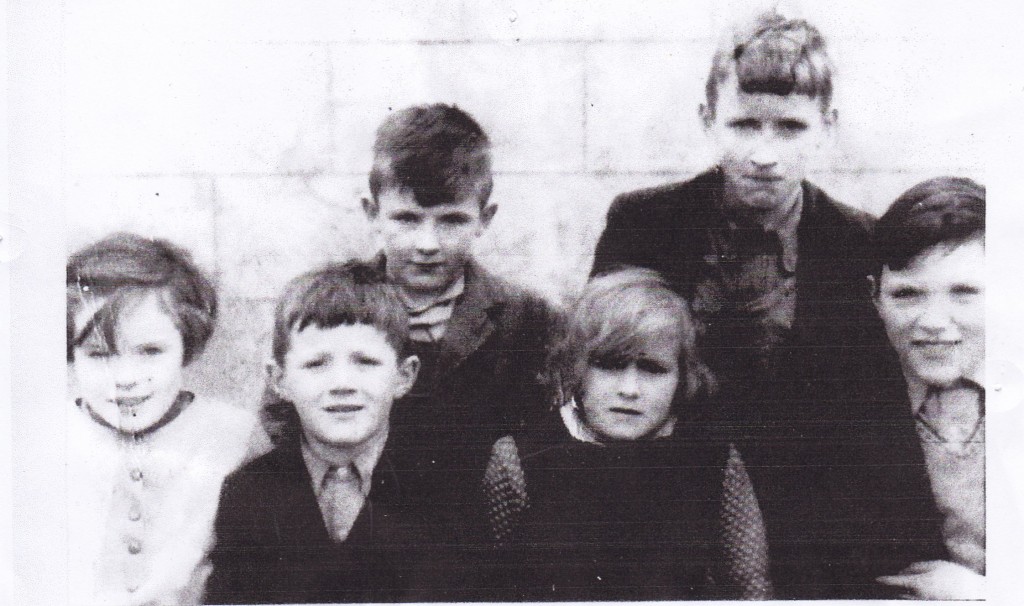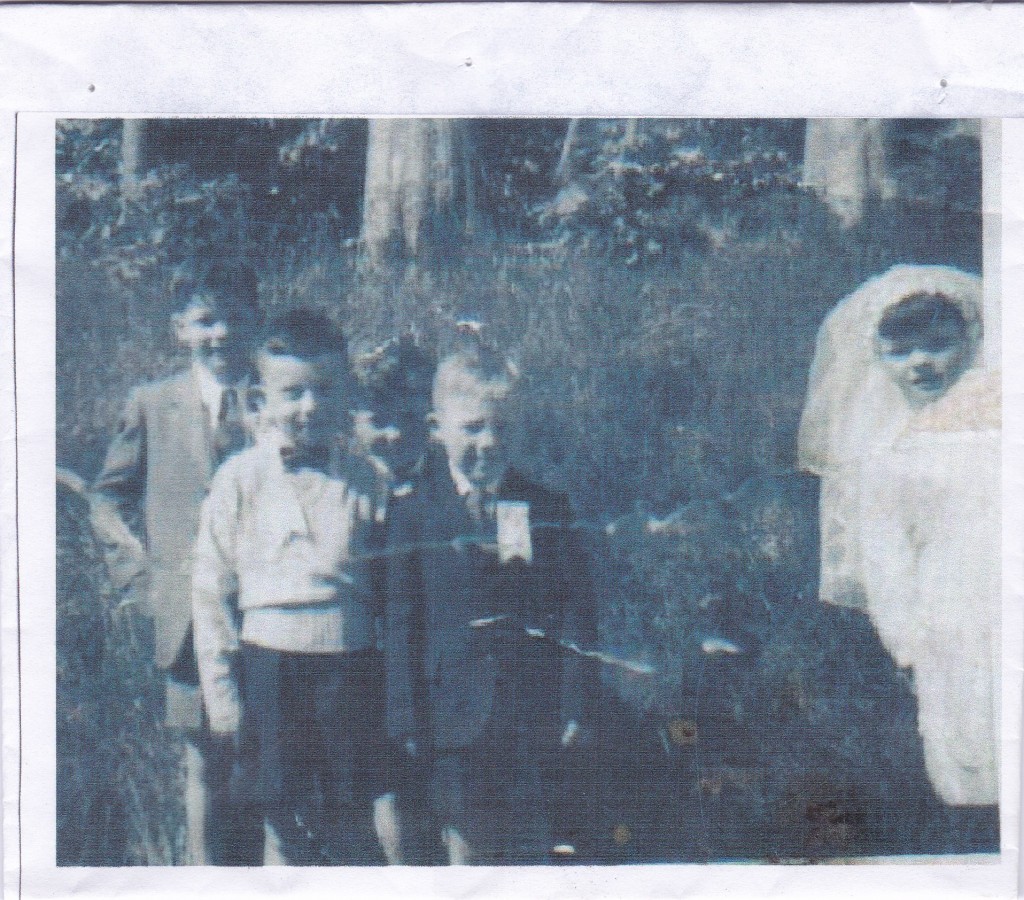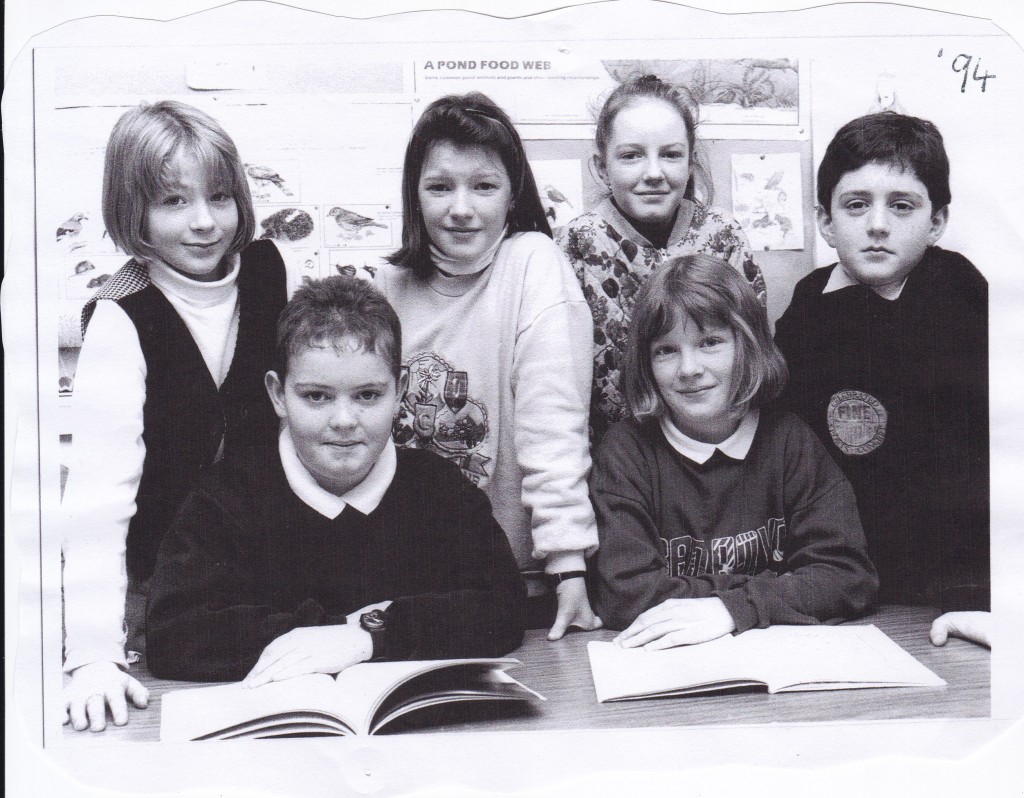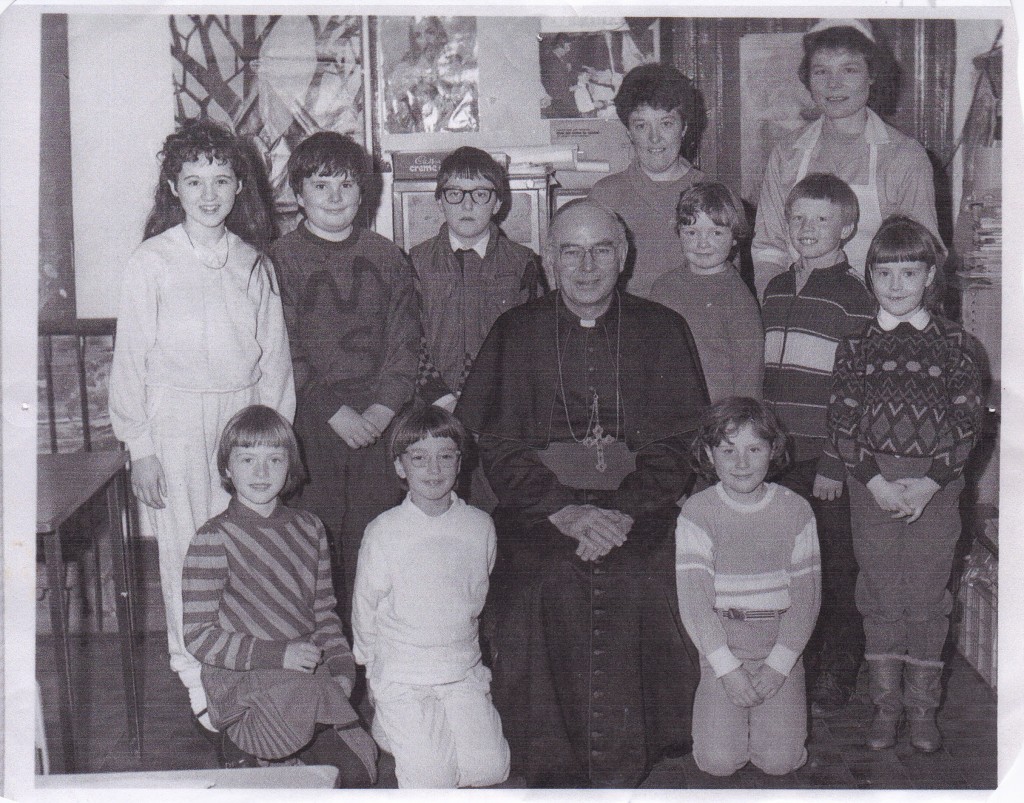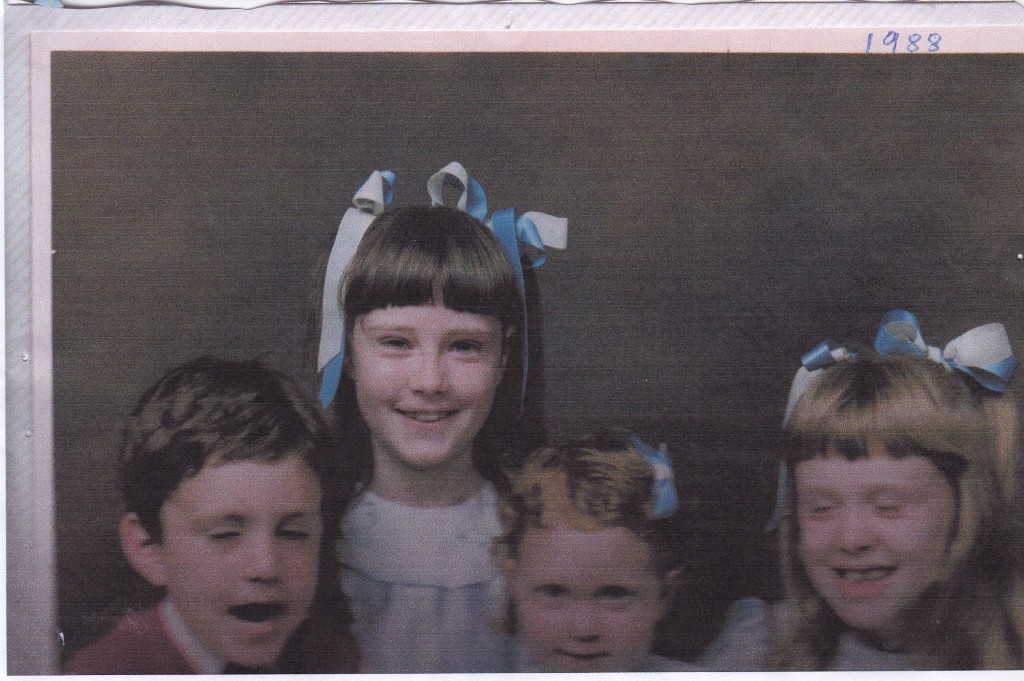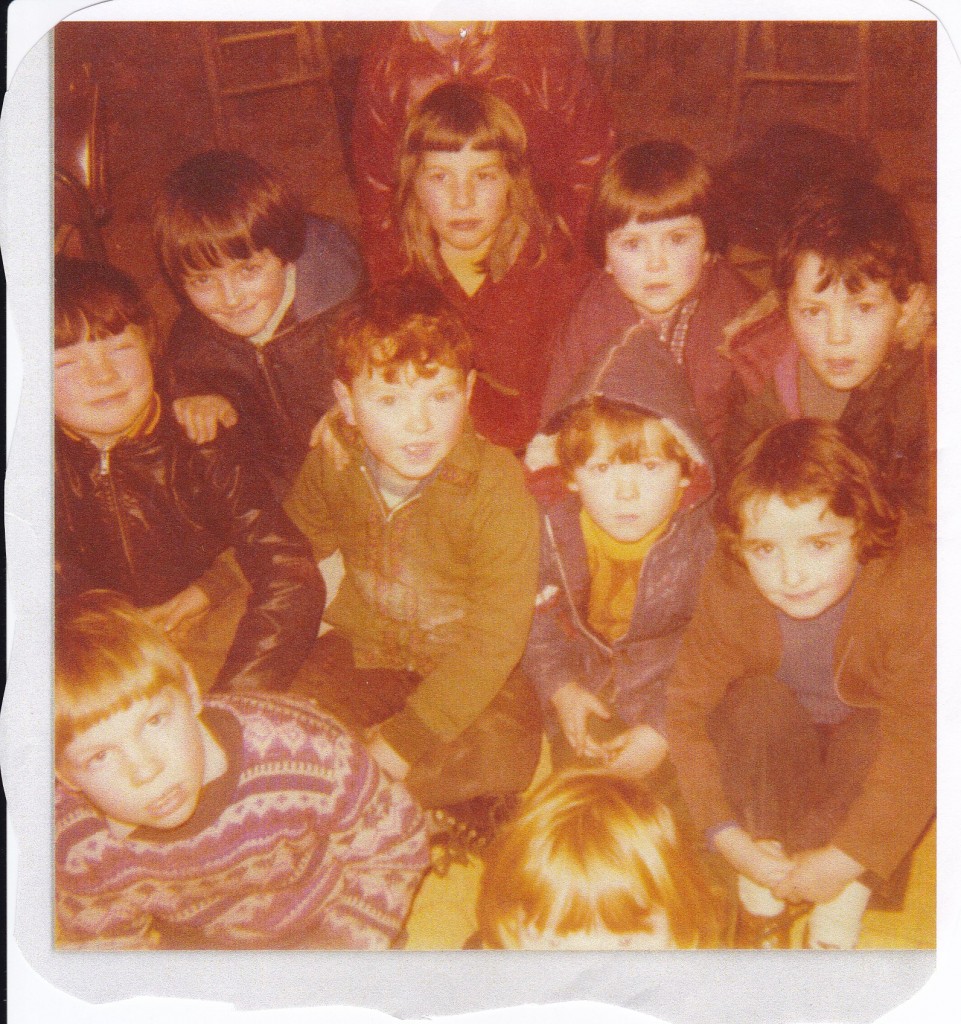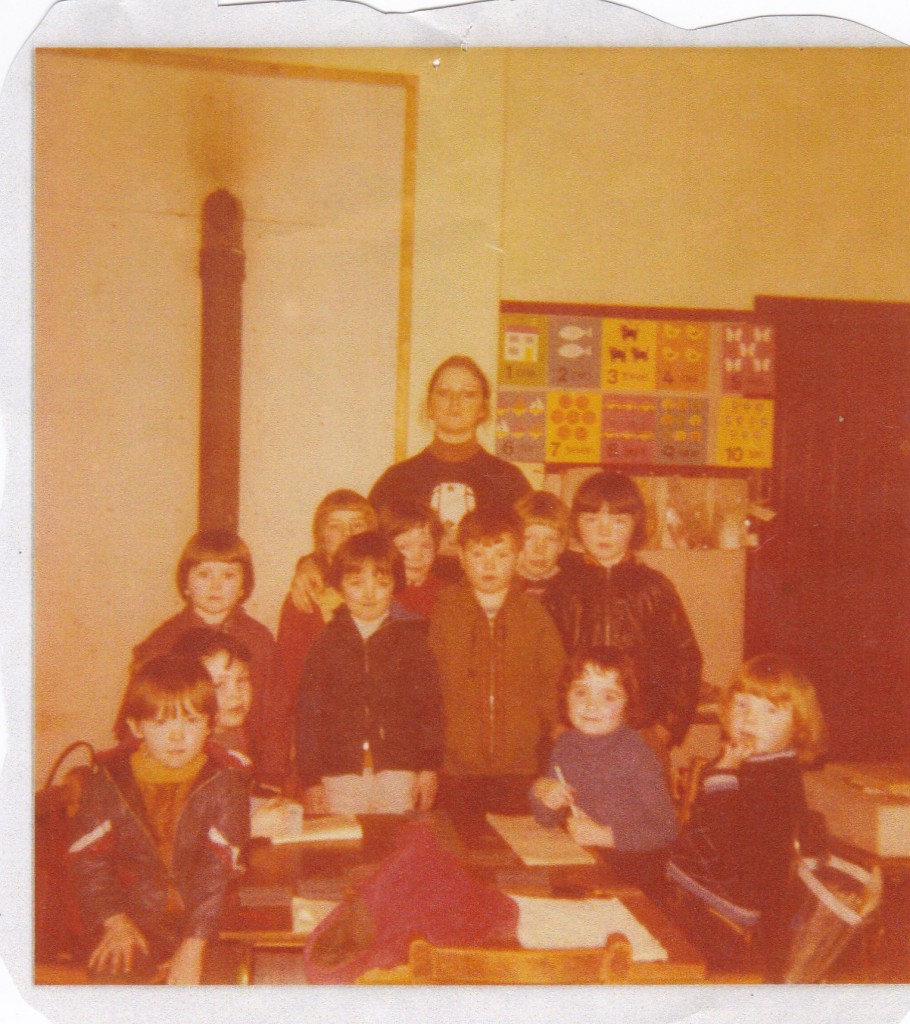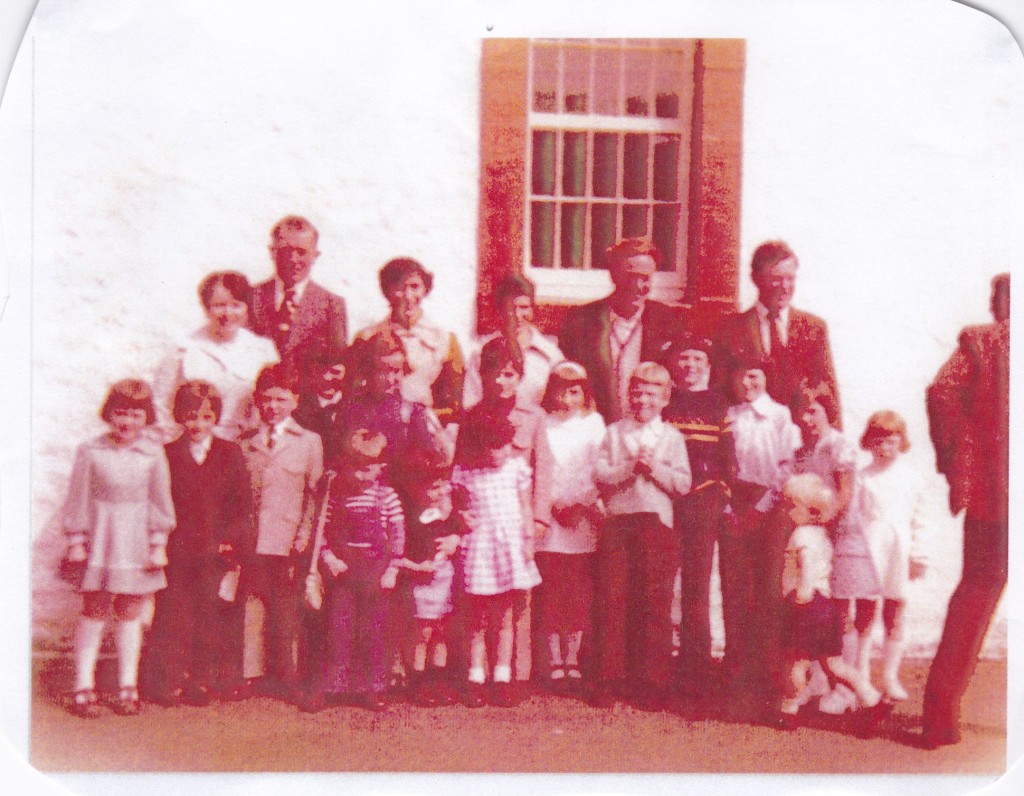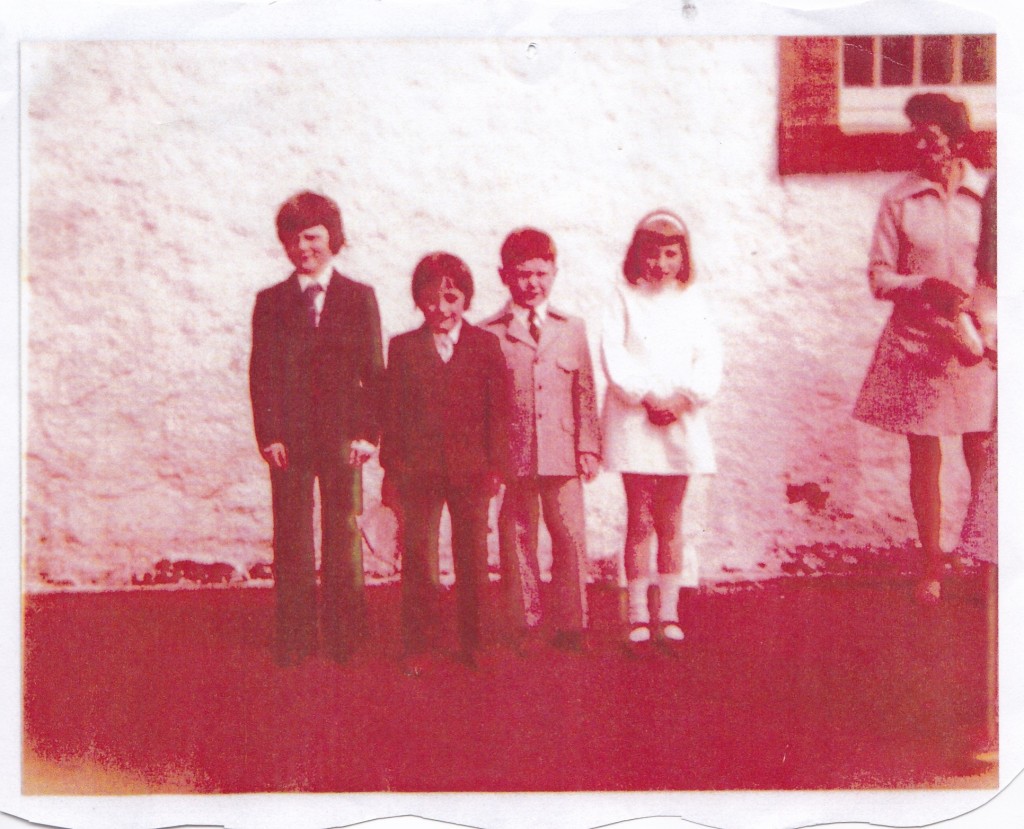Memories of school days down through the decades.
Up until the end of the 1700`s, the native Irish people had been banned, under the Penal Laws, from having or attending schools of any kind. The only way to get any sort of education in those times would have been through the illegal hedge schools and not only were they few in number but the teacher would have had to be paid. Few people in those times could even afford this type of school. So really, the Irish people had no schools. However, by the end of that century things were beginning to change.. The campaigning by the great Irish statesman, Daniel O`Connell, for Catholic Emancipation was beginning to bear fruit and there were signs of big changes in the way Ireland was to be governed. For most of the 1830 `s Daniel O`Connell and the Irish MP`s who were supporting him had helped the Whig governments to carry through a series of momentous reforms. In return the Whigs did much to change the way Ireland was governed. In particular, they undermined the power of Ireland`s exclusive elite and opened up opportunities to a people who had been for so long denied.
In 1831, Chief Secretary Edward Stanley established in Ireland a national system of primary education, with teachers` salaries almost entirely paid by the government. This was a momentous change for a people who had been denied access to education previously. By 1840 nearly a quarter of a million young people in Ireland were receiving a formal education. This system was open to children of all religious persuasions and the idea was to educate pupils of all persuasions in the one school without interfering with any of their respective religious beliefs. We can still see the term National Schools written on the nameplates of the ruins of so many right around Ireland. Every community in the country was getting a National School.
So, on January 6th 1832, an application was made and signed by Rev. James Murphy P.P., Rev. John O`Doherty C.C. and Rev. Michael McGlinchey C.C., Ballinascreen for a new school at Altaeskey. The new school was described as “a thatched house three miles from Draperstown Cross on the road to Omagh”.The pupils were transferred from a rented house nearby where Anthony Rodgers had been teaching. This shows that no time was wasted in taking full advantage of this great opportunity in the Sixtowns. There were 50 pupils, 47 of them Catholics. The first teacher in the school was Daniel McBride who lived where Frank McNally now lives.
The Sixtowns had its own school at last and it would outlive all other schools in the parish and indeed at 181 years of age, it is possibly one of the oldest primary schools in the country.
It is rather ironi that Altaeskey PS has had principals by the name McBride or McKenna for most of its long history and the present principal is Mrs McKenna nee McBride.
An overview of the memoirs of former pupils of Altaeskey PS.
This first thing that we notice about peoples memoirs is that they display a sense of happiness about their school days. They are all positive with no sense of negativity about any aspect of school. These were times of innocence and discovery which still invoke pleasant memories for all the contributors.
James Gillaspie was born in Tullybrick close to Altaeskey school in the 1830`s and emigrated to the U.S.A. Later in life he wrote his memoirs and in them he talks about his time at school. He talked about writing in his copybook. While writing his name he entered into a debate with his teacher about how his surname should be spelt, suggesting to us that the standards of education were good when the school opened in 1832. He mentions competing with other pupils in the class and about how “he was easy taught and could get ahead of his classmates even though they were older than him” suggesting that he made progress at school. This gives us therefore a valuable insight into how the school was performing in its infancy nearly 200 years ago.
Farming life is also eluded to in some of the earlier memoirs where pupils were being kept off school to “hurd” cattle or to plant crops and help harvest them, and then return to school again in winter when the work was all done. The numbers on the rolls did not seem to change over the years either as did other things in school, like the curriculum, resources(the same old musty text books for decades),the bucket of water and the cup for pupils to drink out of. The round stove seems to have been there in everyone`s time as was the big beech tree at the front of the school.
Various eras were also referred to, like the IRA campaigns of the 1920`s and 1950`s as they made their mark on some pupils memories.
Other things like, people who would have passed the school or whom the pupils would have met on their way to or from school like the travellers who used to stop off in Cavanreagh from time to time or other people of the roads like Tom Bottles or Harry Hamill. The goose drivers got a mention, as well as people travelling up to cut turf at the top of the Sixtowns.
However, most people liked to reminiscent about their journeys to and from school which could be very indirect and time consuming at times especially if they decided to take a “near road” which could have taken you just about anywhere but the route you were expected to take by your parents. Places like Dan Mullan`s glen or Billy`s glen and in particular along the banks of the Moyola would have been a constant temptation to the pupils of all eras. Pupils knew every hole in the hedge, ,every bird`s nest and every fruit or herb which they could eat.
The isolation of the Altaeskey PS in earlier years is in evidence here as well, as there is no mention of pupils being anywhere outside the area until perhaps the 1960`s when they competed in the Feis in Draperstown. In fact as you might expect there was no contact with other schools in the parish, unlike nowadays when school trips are part of school life.
Many remembered the various religious events which happened like Confirmation, First Communion, the Centenary of St. Patrick`s Chapel, the Patrician Celebrations at the Old Church at Moneyconey and the various trips and masses at Lough Patrick. Pupils would have been involved as altar servers, choir members and numerous other roles in preparation for these events.
There is evidence in the memoirs of the 1950`s and 1960`s of change and improvement in facilities like new furniture, new toilets with running water as well as free milk and later on dinners for the pupils. The school even got a cleaner.
Memories from the 1840`S.
( From the memoirs of James Gillaspie (Gillespie) who emigrated from Tullybrick to America in 1852 and who wrote his memoirs some years before he died.)
“ My boyhood days were the same as most of the boys of that time, going to school in winter season and herding the milk cows during the summer.
When I was at school I was easily taught and could get ahead of the other members of my class even though they had attended school all year.
When first I was learning to write, I, on one occasion, wrote my name as Gillespie on my copy book. The master, who was said to have been a good historian, told me that I should spell my name by placing therein, the letter `a` where I and all of my people had used the letter `e`. He said that according to Irish tradition my name should be spelt “Gillaspie”. (The Irish version of the name is actually Mac Giolla Easpag)
I then commenced to spell it that way and indeed still do to this day.”
“At the age of ten years and three months I was confirmed.”
“I remember “the night of the big wind”. It was on the night of January 6th 1839. It was on a Sunday night. Some say it was on a Tuesday night but I know that it was a Sunday night because I went to school the next morning.”
(Reading these memoirs we realise that the teaching standards seemed to have been good in the school at that time, with the mention of handwriting, spelling and history as well as the use of copybooks.)
Memories from the 1920 and 1930`s.
When I went to school Master Charles McKenna was the principal and then he retired and Master Donnelly came in his place. There would have been an average of 60 pupils at the school then.
Most of the boys would have left at 14 and that would have been at summertime. But then some of these boys would come back again in November as big lads wearing long trousers. They would continue to do this until they were 16.
We took the education very easy in those days but I got enough of it to do me. I was good at drawing and I used to stay behind after school for it. Master Donnelly was fond of art himself and he would have let me draw all day if I had wanted to. When the class would be over he would say to me, “You just stay on and finish that”. I was told that some of my drawings were up on the walls for years after I left.
I remember walking to school one morning and having to climb over a barricade across the road at Joe Conway`s (Dan) house which the IRA had built in preparation for an ambush but had decided to call it off for some reason.
On our way home from school at certain times of the year, we might meet James Pat McCullagh from Coneyglen driving geese to the train in Draperstown. He would sometimes be carrying one which had become lame. He was from Coneyglen and he dealt in geese. He would take them on the train to Belfast and then on to England on the boat. Two local men working near a small town in Cumbria saw him at the market there. Neal Mullin used to be driving geese along the road as well. We used to hate when the geese were on the road because we would be in our bare feet and the goose dung would be all over the road and it would get stuck between our toes. We hated that.
Sometimes, just for a change, we would walk home from school through the holmes along the Moyola, exploring the place and gathering nuts. There was a sandy cliff at the back of Joe Conway`s (Dan) spink and there were sand martins nesting there. We used to put our arms deep into the holes to see if we could get the eggs. Our parents used to forbid us from doing this because the holes were full of fleas from the sand martins and they would get on the sleeves of our clothes
When I was about ten years old, an inspector visited the school. Just before he left he was chatting to us and he asked if any pupil would sing a song for him. I put my hand up and being innocent and not very aware of the political sensitivities of the time, what did I sing but Kevin Barry, a popular republican ballad of that era. Needless to say he did not ask for an encore.
I remember the older boys used to chew up paper and put a pin into the wet paper and then when the master was`nt looking, they would fling it up to stick on the ceiling. Sometime later when the paper dried out it would fall down and often they would hope, it would stick in the master`s head.
“I remember the first day that I was to go to school. I was all dressed up for the big day but when I got to the school gate I took cold feet and would not go into the school without my sister. No amount of persuasion was going to make me change my mind. Master McKenna even gave me a sixpence to get me to come in but I just took the money anyway and headed for home.”
“In those days you went barefooted for most of the year because in many cases you had no shoes. Often we could not go to the chapel on a Sunday if we had not got the shoes to wear.”
“There was no transport to and from school like there is nowadays. I can remember my father walking down to the school on wet days, bringing coats for us to get home dry.”
“ You never dillydallied much on the way home from school as you were always needed to rod corn, gather potatoes or do other chores. A few times we went gathering nuts but that was it.”
“We would get a bit of sewing or cookery class every week but it was`nt much, just bits and pieces.”
“The master that time would ask you your name when you first came to school and he would write it into the register without checking the birth certificate and so you got the name which was used in the house. This is why some of the names on the register are different from their known name. “
“ I remember the first dentists coming to the school. They examined our teeth and then later we had to go to their dispensary in Steeles Hotel on the Magherafelt road in Draperstown. My father got the horse and cart out, used a crib to make a bench seat across the front of the cart for mum and him and we sat in the cart and off we went. When we were finished up in the dentist`s my father bought each of us an ice cream. It was the first ice cream that we had ever seen. It came in little edible dishes. We found it very cold and eventually threw it away.”
Memories from the 1940`s.
“There was a boy in our class called Dan and he was full of devilment. When the master would go into the other room for something, Dan would slip up to the front of the room and put on the Master`s coat and hat and mimic him. He would just be back in his seat again as the master would come back into the room. We would be terrified in case he would be caught. One day when the master went out Dan decided to go a bit further and he gathered a stack of books and put them into the oven of the stove . The master took some time to return and it was` nt long until the smoke started to bellow out of the oven and Dan had to quickly rescue the books. When the master eventually came back in again he could smell the burned books but could not figure out what had happened. Heads were kept down for a while afterwards.”
“There was another boy called Jim who was a bit of a prankster. One day he was off school and he slipped up to the school and let the master`s bicycle wheel down and hid his pump. The next day the master lined all the boys up and they all got caned.”
“When he came to Jim, he reminded the master that he was not at school that day and escaped being punished. He had a good laugh at the rest of the boys who got slapped.”
“The master used to send some older boys down the glen to cut some rods which he could use for canes. The boys were cute and would cut into the rods with their knives so that they would break as he used them and he would soon run out of them.”
“There were no examinations except the Religious examination and a huge effort would be put into preparing for it.”
“When I was at school in the 1930`s there were 42 to 44 pupils at the school.
You left school at 14 and the prospects of employment were poor. My two brothers managed to get into an apprenticeship for carpentry but many others got nothing.”
Memories of the 1950`s.
“The school was pretty basic when I went there and there were not many resources in it. There were two dry toilets at the back of the school and there was no wall at the front, only a broken beech hedge but traffic was scarce then on the road so it was not as dangerous as now.”
“I remember when I went to school, the desks were long benchlike ones which sat several pupils and they were set out in rows according to the classes. Then one day a lorry came with a load of new small one pupil desks and chairs and the old ones were thrown out. This was a great novelty at the time.”
“There was no fence at the back of the school and we would go down into the glen at break time to gather nuts or climb trees. I remember myself and two other boys forgetting to come back and we arrived back nearly an hour late and got into serious bother.”
“There was no free milk or dinners and you had to bring a bit of bread and a small bottle of milk for your lunch. Dinners did not come in until the 1960`s.”
“There were lots of mice in the school and there was always a sticky stuff called Dack on pieces of cardboard at the back of the room to catch the mice.”
“The pupils would throw away the bread which they did not eat and the yard would be black with crows in the afternoon.”
“New toilets were built near the end of the 1950`s and a wall was built along the front with a mesh wire fence all around the yard. That was some novelty, ……. flushing toilets and tap water.!!”
“When school was over and as the pupils going up the road parted company with those going down the road things would deteriorate into a customary slagging off match. Later as both parties retreated a safe distance behind cover the master would be leaving the school. This was when both parties turned their attention to the master and spleens were freely vented in his direction from the safety of a high hedge. This had developed into a daily ritual.”
“Fights were a daily occurrence and you had to be able to stand up for yourself whether you were male or female. The term “bullying” was not acknowledged at that time. There was always great satisfaction taken from seeing the bully put in his/her box.”
“Traffic was scarce on the road and it was mainly old cars carrying bicycles on the back or bags of meal while old people would be taking advantage of a lift to or from the town. In fact such was the novelty of traffic that when a vehicle was approaching,
All the pupils would rush over to the front wall to gawk as it passed.”
“We rarely got new text books and those we had were ancient and smelt of damp. Ink was mixed in a jug and put into inkwells in the desks. You had a pen which was a wooden shaft with a nib stuck on the end. You dipped it into the inkwell and began writing. Sometimes a big blot of ink would fall out on your page and you had to use a blotting page to dry it up. Pages could end up in a bit of a mess.”
“When we got our summer holidays, everyone was so excited that as soon as we got out the school door we just ran and ran cheering loudly along the way home. The whole neighbourhood would know that the holidays had started.”
“The custom of going to school bare foot had all but died out by the 1950`s but when the good summer weather came in May many pupils would come to school in their bare feet. Walking barefoot on tarred roads was much easier as well even though many the toe was skinned on the way.”
“The pupils from Moneyconey would cross the Moyola on their way to and from school. There were a number of “footsticks” which were used from McCullagh`s pad right up to McSorley`s.”
“Sometimes we would meet travelling people on the roads as they begged or did casual work for local people. Some of these were well liked in the community and we used to enjoy engaging them. Gypsies, as they were known would be either on foot or in a horse and trap. We were afraid of them. One day a huge convoy of them passed the school on their way and it seemed to take ages before the last were to pass the school.” “There was a powerful array of caravans of every shape and colour. We had never seen anything like it before or since.”
“In the autumn on our way home from school, pupils would go gathering nuts in Billy`s glen, raid apple trees at Mick Campbells or raid plum trees at Dan Mullan`s. Books would be destroyed as plums were crammed into schoolbags and there would be hell to pay the next day in school. ”
“We more or less grazed our way to and from school as we picked blackberries and raspberries as well as blaeberries as we unwittingly built up our vitamin C reserves for the winter. We knew every edible piece of vegetation as we tasted “sorrocks”, rose hips, slows and herbs along the hedges.”
“Various people would visit the school at times, the PP or the nurse, dentist or the inspector, but the one person who was disliked most was the attendance officer who was known for his aggressive approach to anyone whose attendance was not good. The custom was to stand up when a distinguished visitor came into the school and do the same as they were leaving. One day the attendance officer was in an awful mood and very few pupils missed getting a serious grilling from him. He had a habit of saying “I`ll take you for a walk!”, which meant, going to court for bad attendance. As he left that day nobody stood up. Instead there was a deafening silence. He was clearly rocked as he left, at the collective resentment from the pupils towards him.”
“During the I.R.A. campaign of the 1950`s a local man was arrested and his house was being searched by the police as we made our way home from school. I remember them carrying long metal pokers for probing into the ground. They did not find anything and were just hanging about. We did not really understand what it was all about.”
Religion in school.
In Altayeskey PS, since it was a Catholic school, religious matters was very much part of school life.
The religious examination was the most important event in the school calendar.
Here are some pupils memories :
“ I can remember Fr McNally coming into the school to see how preparations for the exam were going and he began to ask some questions and when he was not getting the standard of answers which he expected, he flew into a rage, threw down the catechism and stormed out of the school. I suppose that this was his way of putting the pressure on us to get it right for the next day.”
“We were always nervous seeing Fr McNally coming into the school when the religious exam was coming up because we were afraid that we would not be able to answer the questions but mind you we were on our own in this respect. One day when he had come to the last of his question he had one more and it was “What is the registration of my car”? Of course nobody knew even though the master was frantically trying to prompt us from behind his back. I don`t think he was pleased with us that day either.”
“I remember a new religious inspector arriving at the school one day on his bicycle. He was a handsome and most pleasant young priest. He was so nice to the pupils and we loved to see him coming. He was Fr McGlinchey, from Greencastle and he was a breath of fresh air to all.”
“First Communion day was a big affair and a lot of preparation would have to be put in at school. Boys would be dressed in white shirts and ties while the girls would wear long white dresses and veils. After the ceremony all the pupils who received first communion would go round to the vestry where they would get a treat, usually a mineral and a bag of treats. We thought that this was some treat.”
“Confirmation was another big day in the religious calendar at school. Again there would be a lot of work done in school with the pupils who were to be confirmed. You had to know your catechism from back to back.”
“During confirmation the Bishop would come down from the altar and pick a random number of pupils and they would be asked to come up to the altar where he would ask them questions on the catechism.”
“I remember sitting sweating in case the Bishop would ask me up but thankfully he passed over me. “
“The ceremony was so long, about three hours and it seemed like all day.”
“The local men used to have to drive out to the top of the Brown Knowes to meet the Bishop and escort him in a cavalcade all the way to the chapel.
Bishop Farren always expected that. “
“Someone asked Fr Houghton what mood did he think the Bishop would be in when he would arrive that day. (He was known to be moody)
“Well,” says Fr Houghton, “ he will either come over the Brown Knowes like a lamb to the slaughter or he will be like a buck in the frost”.”
“I remember three of our family for confirmation on the same day. Confirmation was every three years at that time. That was a nightmare for our parents, getting three children ready at the same time. One of my sisters was getting the loan of a dress from friends for the day but as the morning went on there was still no sign of them turning up with the dress. We were in some sweat. Eventually at the last minute they showed up and the unthinkable was avoided. “
“Old Dean McGlinchey used to line all those who had just made their confirmation up along the wall at the vestry and he would have a bag. Each pupil would put their hand into the bag in their turn and they would take out a coin of money as a treat on their big day.
I remember Fr Collins organising a pilgrimage to Lough Patrick in 1959 for the Patrician year celebrations. The schools put in a lot of preparation for this pilgrimage. I remember we had to help to make up the white paper bags of sandwiches and a pastry which would be brought up for the pilgrims.”
“We waited at John Cleary`s to get a lift up in a tractor and trailor to the lough. There were lots of people walking up and the craic was great.”
“John Cleary made up an altar for the mass and people sat about on the heather. The weather was lovely and many people were going round the lough doing the myself station.”
“There was also a celebration at the old church at Moneyconey in 1959 for the Patrician year. A lot of preparation was put in at the school for this big day. I was an altar clerk and I and some other clerks were supposed to come to a practice a couple of days before the mass. We assumed that the practice would take place at the chapel and we were waiting for ages riding our bikes round and round the chapel while at the same time Fr McNally was pacing up and down at the old church at Moneyconey. He was like a bull.”
“I remember sitting up on the hill in Duffy`s field as the mass went on, while our Protestant neighbours sat on the hill of the next field watching the proceedings. It was a big day for everyone.”
“I remember, we were in the choir and one evening we went home to Boley, got our dinner and had to walk back to the school to a choir practice for the mass at the old church.”
“All the men would go down to the old church in the evenings to cut grass and clean up around the old church in preparation for the mass.”
“The centenary of St. Patrick`s chapel took place in 1958 and the school was used as the base for the newly formed accordion band to do their practising. I can remember the big drum was kept in the school. Sometimes other instruments would have been left there during the week and we would be dying to try them out.”
“There would be choir practices in the evenings for the big day. We had to go.”
“I remember coming home and seeing all the men working at the chapel squaring up the graves and cutting the hedges. I remember them cutting down the trees along the road. They were huge beech trees and that was the first time that I saw a cross cut saw being used. We used to stand around watching the men working. Men would be climbing the trees while others would be pulling on ropes. It was very exciting.”
To and from the school.
As big a part of our school memories as any was the journey to and from school, the people we met, the things we saw and all the carry ons which we got up to. They were all a reflection of the kind of times we lived in at those times.
More memories:
“We used to meet Geordie Barnett on the road and he was a source of curiousity for us because he was shy and polite and would have a small bag on his shoulder. If he saw a peculiar stone along the road he would take out his magnifying glass and give it a quick examination. We would always ask him , “What have you in the bag today, Geordie”?, in the hope that he would show us something exciting. He would stop and chat to us and he would always have something interesting to say.”
“There would be a few travelling people on the road when I was at school. I remember Tom Bottles and Harry Hamill who would wander the roads and lie out in sheds at night. I remember, especially, P.O. as he was called. He was an eccentric kind of man but was very well liked in the Sixtowns. He was very witty and we used to enjoy meeting him. We would always ask him to sing for us. He would be carrying a small bundle of newspapers or twigs.”
“Now and then we would meet travellers or gypsies as we would have called them. They usually came in horse and traps but the women would often be on foot calling at every house. We were afraid of them.
The travellers would be camped down by the Meetinghouse in Cavanreagh from time to time and nobody wanted to walk past them going to or coming home from school.”
“Another set of people would visit the Sixtowns in a caravan and were even less welcome than the travellers, that was the school dentist. They came and parked their caravan at McNally`s and the pupils had to go down from the school to have their teeth treated.”
“They had a reputation for taking a rather unsympathetic approach to their work.”
“The dentists used our house (McNally`s) as their base before they got the caravan.”
“I remember in the 1950,s through to the 60’s the girls would go into Mrs McNally’s room one afternoon a week to do sewing and knitting while the boys did Nature Study with Master McKenna. Sometimes we worked with raffia in beautiful jewel colours, sewing it onto round cardboard cards which had pre punched holes. Both boys and girls did this.”
“Some girls were very expert and won prizes at the Feis in Draperstown especially for embroidery. I remember my sister getting the untold riches of one and sixpence! Not me! I think I spent my entire years there knitting the front half of a gollywog! There were prizes won for artwork too.
Mrs McNally also taught the school choir and the school won a silver cup. I seem to remember that when we had won the cup three times the school were allowed to keep it. And I got the privilege of carrying it because I was the youngest in the choir. Songs like the ‘The Dawning of the Day’ (in both English and Irish) and ‘My Singing Bird’ were two of our ‘big hits’. ”
“I wonder does anyone remember a big stone at the upper side of the yard that we used to cut into with bits of slate supplemented with dribbles of water or – when necessary- spit. I can remember being totally absorbed in this.”
“We were generally well warned not to be calling in and bothering people on the way home so it was always great when we had to call in with magazines like The Far East or the Messenger- a cast iron excuse! And Penny Dabs- where the unfortunate neighbour had to jab holes in a card and we would collect a penny for the missions for each hole. One busy man tying corn chased my younger sisters away saying he got all the penny dabs he needed from the thistles in the corn. Most people we called with however had the patience of Job with us-especially Mary Conway (Dan) where we called almost every single day to ‘see the time’ on her big round clock. Raids were regular! Mary’s big plum tree, Billy’s glen for nuts, Mick Campbell’s for apples and gooseberries, Joe Bradley’s (Hamish) for cherries and red currants and nobody said a word to us.”
Looking at what people`s memoirs revealed.
The memoirs of the former pupils which are recorded here, not only describe their school days but they are also written in the context of the times in which they went to school. This gives us a great insight into life in the Sixtowns down the years. For example, how farming routines and chores affected attendances at school at various times or various aspects of life which were referred to in the course of the reminiscing. There are memories that will strike a chord with everybody who attended that school.
.

